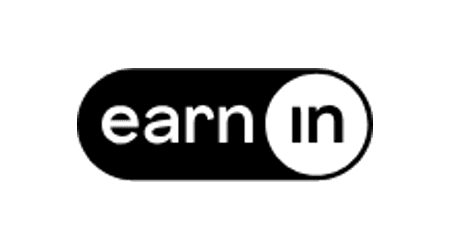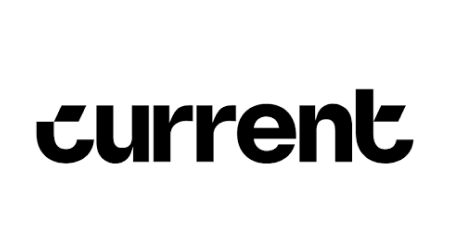
- Borrow up to $150/day, with a max of $750 between paydays
- No credit check
- No monthly fees or interest
- Connect bank account to access cash advance


Cash advance apps, also known as pay advance apps or paycheck advance apps, are financial services apps that offer small, interest-free advances on your next paycheck. These small amounts of extra cash are designed to help users avoid overdraft fees. In addition to advances, these apps typically offer a range of services designed to help improve the user's financial health. But many apps require users to pay a monthly membership fee to qualify for an advance. This makes cash advance apps best for those who regularly overdraft their bank accounts — due to a misalignment between their pay schedule and monthly bills, for example. You also run the risk of overdrafting your account if you don't have enough funds to cover your repayment when your paycheck comes through.
We currently don't have that product, but here are others to consider:
How we picked theseThe Finder Score crunches 3+ types of short-term loans across 65+ lenders. It takes into account the product's interest rate, fees and features, as well as the type of loan eg investor, variable, fixed rate - this gives you a simple score out of 10.
To provide a Score, we compare like-for-like loans. So if you're comparing the best short-term loans for all credit types, you can see how each short-term loan stacks up against other short-term loans with the same borrower type, rate type and repayment type.
Cash advance apps, also known as payday advance apps, work by connecting to your bank account, analyzing your history of direct deposits and advancing a portion of your next paycheck upon request. When your next payday rolls around, the app automatically debits the advance from your account.
While your income doesn’t need to come from a full-time job, you generally need to show at least three months of consistent payments from gig or part-time work, government benefits or another income source. If you just started a job, you may need to wait three months unless you received over the past few months.
Some apps like the Brigit app also allow you to sign up for automatic advances if your bank account balance is too low to cover regularly recurring bills, as a form of overdraft protection. But typically you need to request an advance to receive one. The best pay advance apps offer quick delivery and low fees. Some apps may even offer near instant funding if you meet certain requirements.
While a few offer as much as 50% or even 100% of your paycheck, most only advance up to $250 per pay period. Apps like Earnin and the Branch app are outliners that offer advances up to $500 per pay period — but you can only borrow as much as around $100 at a time.
Even with an app like Earnin, most users won’t qualify for the maximum advance right away. Your advance amount typically depends on the following factors:
Advance amounts for new users often start at around $50, though apps like MoneyLion Instacash offer advances starting as low as $25.
Unlike personal loans, paycheck advance apps don’t charge interest. And unlike payday loans, there is typically no fee directly connected with the advance.
But that doesn’t mean these advances are free. While there are no hidden fees per se, some users might be surprised by some of the costs. But, there are some cash advance apps that get pretty close to free with lower transfer fees and even some with no monthly membership fee.
Most often, apps require users to sign up for a paid membership in order to qualify for an advance.
For example, Dave, Brigit and MoneyLion also offer budgeting tools and credit builder features. The Dave app even offers bank accounts without overdraft fees, ATM fees or minimum balance fees.
Apps like Earnin that don’t require a paid membership typically ask for an optional tip — usually up to $14. While these apps claim that tips aren’t required, that may not have always been the case.
In 2019, Earnin faced a lawsuit where a user claimed their advance amounts were tied to the amount they tipped. According to the lawsuit, a $14 tip on a $100 Earnin advance would cost as much as a payday loan with a 700% APR.
The user eventually dropped the lawsuit after Earnin entered another class action settlement. This lawsuit came from a group of users who sued the company over overdraft fees they were charged when the app deducted repayment from an account with insufficient funds.
While many apps offer same-day funding, many charge a small fee for this service. Otherwise, it can take up to three business days to get your advance.
Apps that charge a range of fees typically vary depending on the advance amount, charging higher fees for larger advances. Here are a few examples of same-day funding fees you can expect from a cash advance app.
Apps like Vola Finance offer instant cash advances if you sign up for the Vola Card. The Vola Card falls somewhere between a credit card and a prepaid debit card, in that you can spend the funds as needed but are required to pay it off in full at your due date.
In many cases, paycheck advance apps offer a lot more than cash advances. Many offer the following features:
The main eligibility requirement for a cash advance app is to have regular income that you receive through direct deposit to a checking account. It doesn’t necessarily need to come from the same employer — or an employer at all — as long as the money comes through regularly.
For example, Vola Finance requires you to have an average account balance of at least $150, while Brigit only requires you to have an average bank account balance greater than $0.
Some providers like Chime only allow you to qualify for SpotMe, its overdraft feature, if you have a Chime account.
There’s no credit check, no interest and no fee directly related to the advance. So you can typically qualify even if you have bad credit.
However, many apps require you to regularly use the app. In many cases, users aren’t eligible for the full advance amount until after they’ve established a positive history as an app user.
Plaid is a technology that allows you to easily link your bank account to cash advance apps. It works by letting you connect to your bank account with your login credential within a financial app like Venmo or Dave. It encrypts your data and connects to your bank behind the scenes so the app can access your bank account information.
Because of its ease of use, the majority of cash advance and loan apps on the market today use Plaid. However, there are cash advance apps that don’t use Plaid, if you’d prefer not to connect through this third-party financial app.
Paycheck advances themselves may or may not have an impact on your credit score. But using your cash advance app can help improve your credit rating nonetheless. That’s because almost all paycheck advance apps offer credit-builder features.
For example, Brigit and MoneyLion offer credit-builder installment loans in addition to cash advances. The funds are deposited into a savings account.
Typically, you can only access these funds after you’ve paid off the loan, though MoneyLion allows access to a portion of the funds upfront. It reports each payment to the three major credit bureaus to build your credit history.
Dave, on the other hand, reports your repayments on your paycheck advance to the three major credit bureaus. This means that if you miss a payment, it could hurt your credit score.
The credit builder tool typically reports more data to credit bureaus than they would normally receive.
There are several differences between cash advance apps and personal loans:
If you have bad credit — a score below 580 — you likely won’t be able to qualify for a personal loan. Even with fair credit, you may only be able to qualify for high-interest options.
If you just need a little extra money to get you to the next payday, a paycheck advance app is the better choice. But for larger expenses or consolidating credit card debt, a personal loan is the way to go.
While cash advance apps are more similar to payday loans than personal loans, there are some key differences between the two:
Payday loans are built for emergency expenses, but many Americans use them for recurring expenses, which can trap them in a cycle of debt.
Paycheck advance apps are designed to better meet this need, but they’re also very new. While cash advance apps appear to be a less-expensive option than payday loans, we also don’t have a lot of data on how they affect consumers.
Some companies like Walmart and Comcast have started partnering with paycheck advance apps to offer both wage advances and installment loans specifically to employees. Many of these apps, such as dailypay and payactiv, are only available through employers.
These work similarly to pay advance apps for everyone, but your employer advances the money instead and deducts repayments from your future paychecks. Learn more with our guide to employer-based paycheck advances.
Paycheck advance apps are only one option when you’re looking for cash fast. If you need to borrow more than these apps offer, you might want to look into these alternatives:
If you need $100 or so to hold you over until your next paycheck, consider using a pay advance app. They usually don’t charge interest, so you’ll only be on the hook for a minimal membership fee or optional tip — if that. But you’ll need to be employed to qualify, and you’re limited to borrowing a percentage of the money you already earned.
Don’t have a regular source of income or need to borrow more? You might want to look into other payday loan alternatives instead.
A no-fee advance sounds great — until you see the catch. Find out what’s really involved.
A review of Money App, a cash advance app that offers advances up to $250 with no mandatory fees.
Alternatives to apps like Money App, which may have higher advance amounts and other perks.
Review of Chime’s new MyPay feature that offers cash advances of up to $500.
8 apps like Empower that may offer bigger advances and lower fees.
Cleo is a budgeting app offering cash advances up to $250.
No fees or tips required to access this exclusive online banking feature.
Struggling before payday? See how Dave’s cash advances stack up and what to watch out for.
Fee-free, interest-free cash advances up to $500.
Unemployed and need to borrow money? You may qualify for one of these loans or cash advance apps.
Can I get an advance without any form of ID?
Hi Dustin,
Thank you for contacting Finder.
Yes, you may request for a paycheck advance through any of the Lenders listed on the table above. Most of the Lenders’ requirements are a proof of your income and you having an account with them. Creating an account may not need you to provide your ID thus can request for an advance without it.
I hope this helps.
Please do not hesitate to reach out again if you have additional questions.
Cheers,
Ash